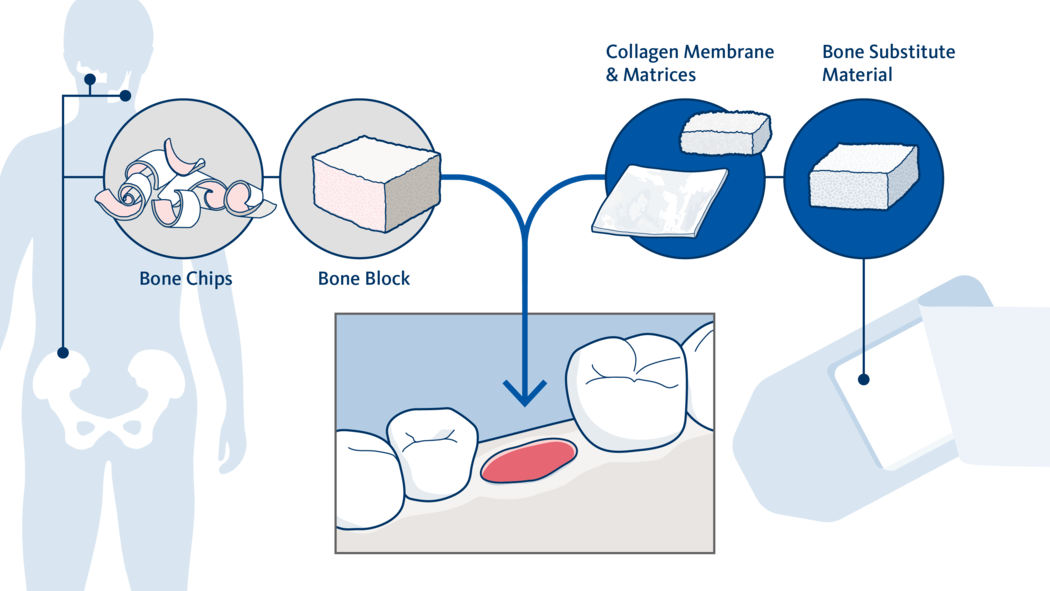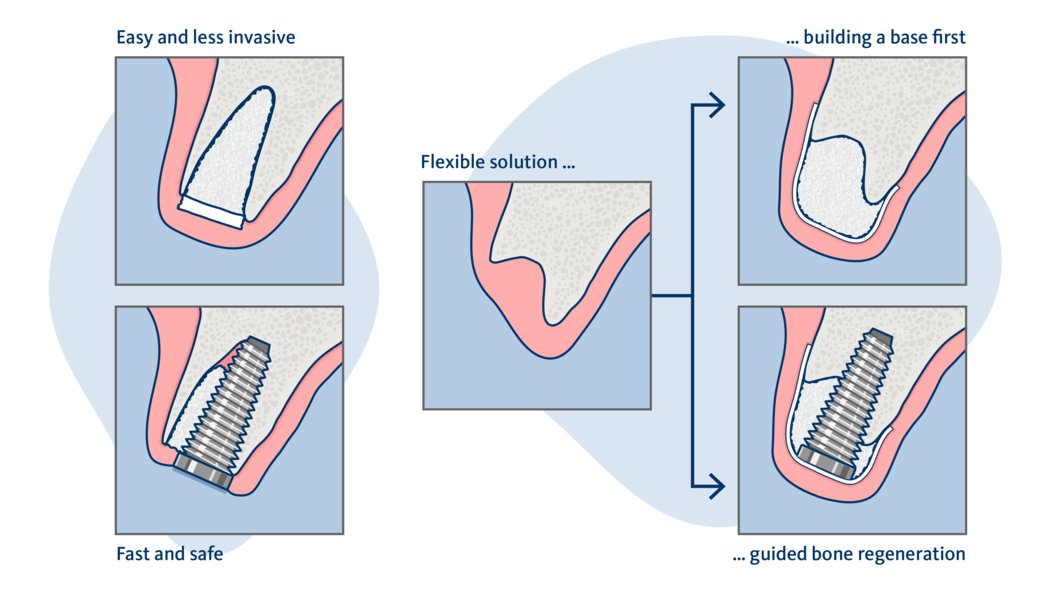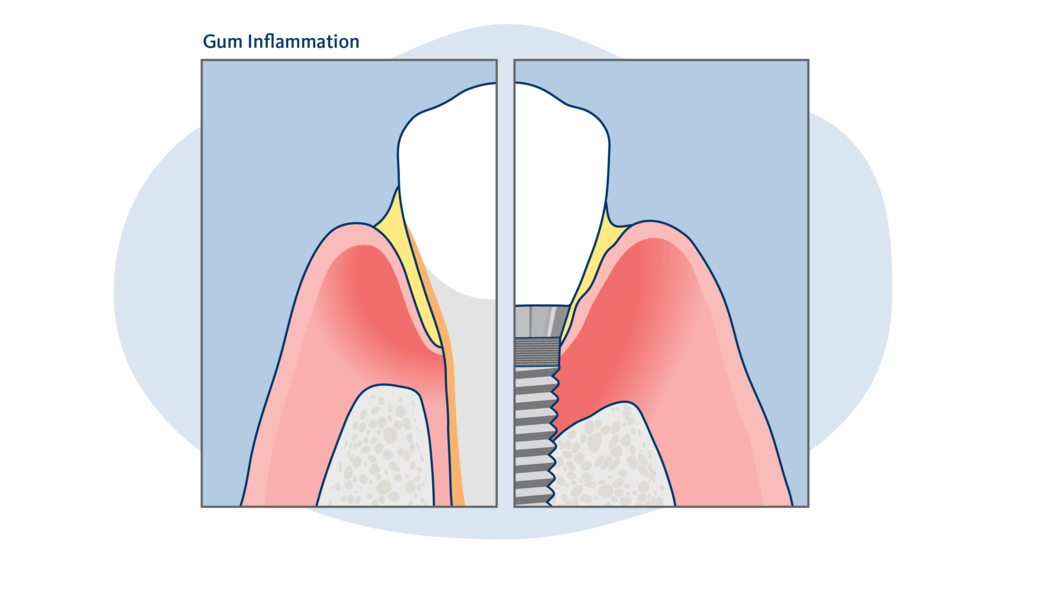Essentials for Successful Implants
Dental implants are a reliable solution for tooth replacement, and implant surgery helps millions of people to smile, laugh and chew again without concern. When it comes to success and safety in the long run, it is vital that these artificial teeth are surrounded by sufficient stable bone.
Having this in mind, dentists employ several measures to ensure that a dental implant can be placed within the necessary amount of bone. They choose a correct implant position within the arch and create new bone at sites with insufficient bone height or width.
There are several materials available for bone grafting in implant dentistry.
Which materials does your dentist use as bone graft for dental implants?
When and how is new bone created?
There are several options for deciding when to use bone grafts around dental implants to create enough bone for a dental implant.
Why are healthy gums so important?
Healthy gums are important for both implant success and aesthetics. One factor is the thickness of the gums, and another is their quality or resilience.
Stippled gums provide protection from bacteria that enter the gap between implant and the gums and bone. Stippled gums form a protective collar around the implant neck – unlike loose mucosa, such as is found near the lips and the cheeks.
Thicker gums help to prevent shrinkage of the bone underneath, and the bone remains stable. They also contribute to the appearance of the restoration, for example ensuring that the implant does not shine through, and that the gums have a good shape. To avoid aesthetic or functional problems later, gums can be made more stable during or before implant placement.
What causes bone loss around dental implants?
Just as you can have problems with infection affecting your teeth (periodontitis, periodontal disease, gum disease), you can also have issues with a bacterial biofilm on your implant threads. This can lead to gum inflammation around the implant, known as peri-implant mucositis. It can even lead to bone loss around the dental implant and cause a disease called peri-implantitis.
Peri-implantitis is a little different to gum disease. Why?
Because an implant is placed directly into the bone, while a tooth is surrounded by lots of fibers that protect it from bacterial invasion. An infection around a dental implant therefore causes more and faster bone loss than an infection around a tooth.
A dental implant affected by peri-implantitis can become loose. In such cases, treating the infection is key – this can involve opening the gums to thoroughly clean the implant surface. Often, it also makes sense after this cleaning procedure to refill the site with a bone graft to support new bone formation.




